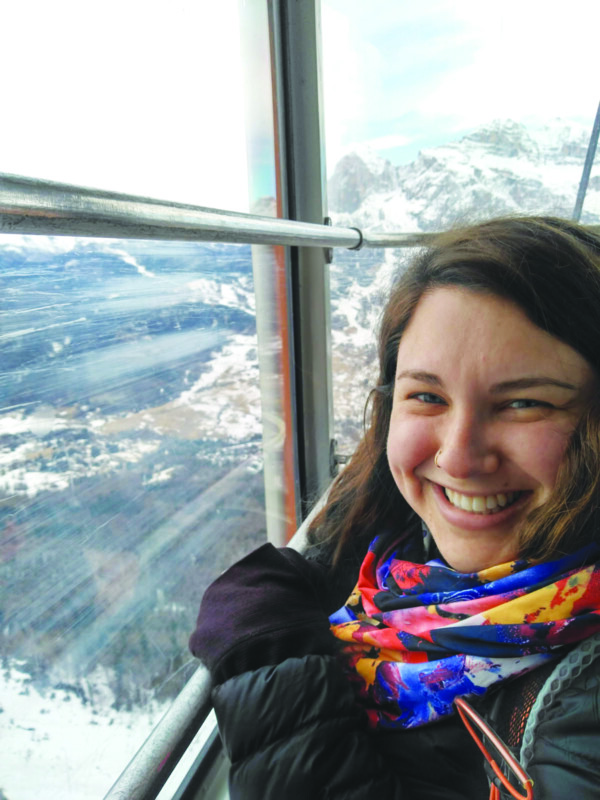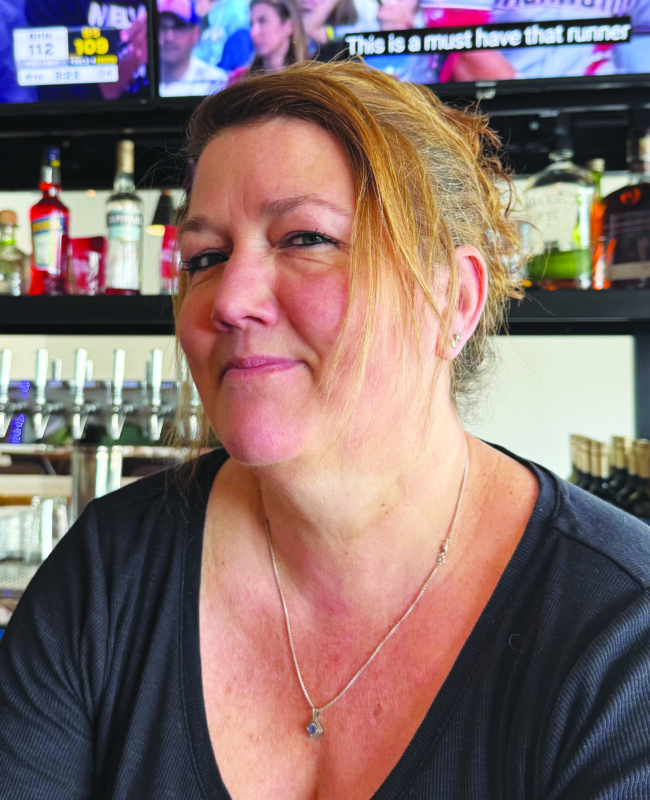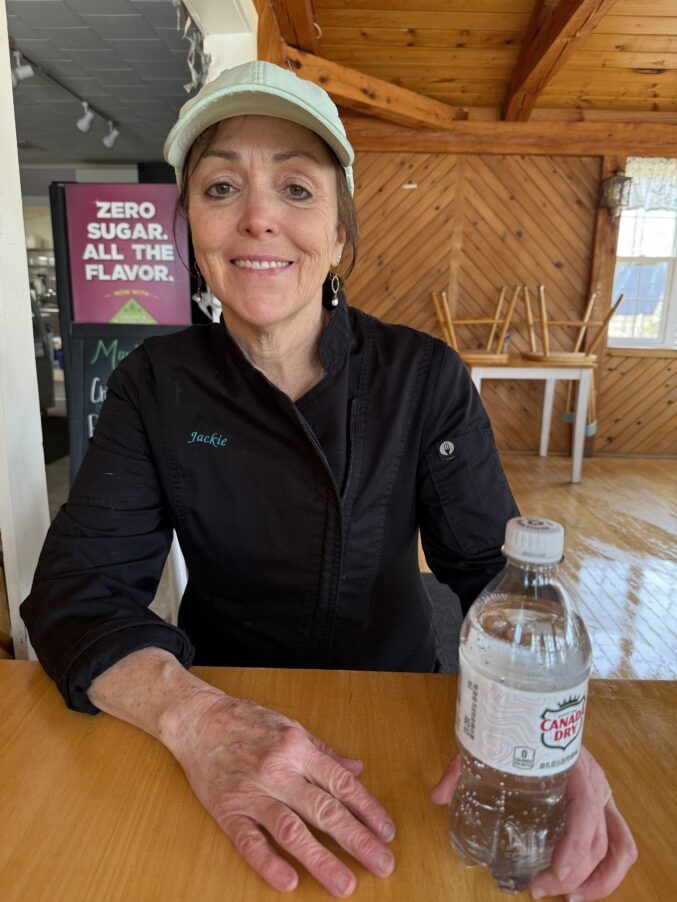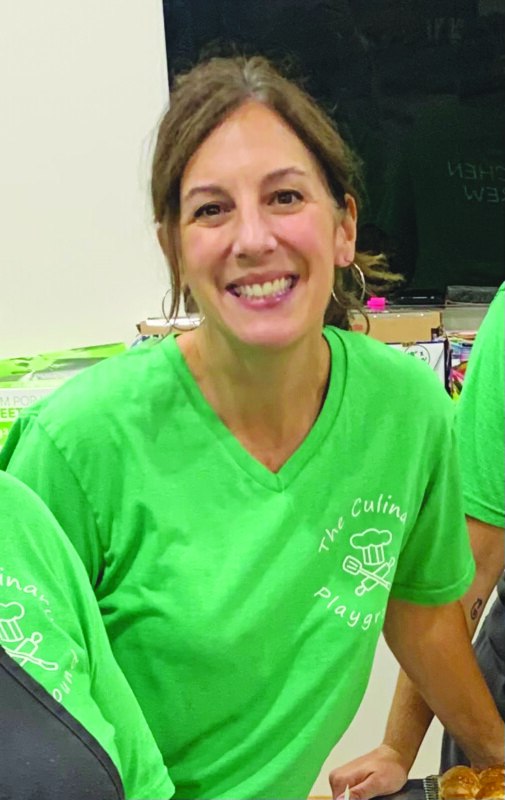New Culinary Director, Pats Peak Ski Area (686 Flanders Road, Henniker, 428-3245, patspeak.com)
“Culinary’s something I kind of fell into,” MacCrea said. “I was working at a hotel when I was like 16 or 17. I was actually a busboy. And then something happened where one of the cooks was on vacation … and one cook got let go, and one guy just kind of stopped showing up. I looked at the executive chef and said, ‘Hey, you can come get me; I can fill in a few shifts.’ That was kind of how I got started. … I did some chain restaurant work. I worked in elder care as a culinary director for Expected Living for about eight or nine years. That was actually really rewarding. Then … I was the executive chef at Great Wolf Lodge for about three years before I took this Pats Peak job. I graduated high school, but then never really went to culinary school because I was already working and in the field doing it, and I love what I did, and I just wanted to work and move up the ladder and progress that way.
Do you have a particular culinary point of view or a philosophy in the kitchen?
I do. I mean, I honestly think it’s not about me; it’s really just about whatever my guest wants. I try to cater to anyone and everyone. I really got into cooking for people with allergies and specific kinds of needs. I started really in health care, but then I expanded it when I was at my last job at Great Wolf Lodge. For me, it’s just all about guest satisfaction. If I can make somebody happy with my food, I’ve done my job.
What’s your must-have kitchen item?
Other than the very obvious, like just a good quality chef’s knife, I feel like oregano is my secret ingredient. I add oregano to a lot of dishes. I just like fresh herbs. I think if you have fresh herbs in general, you’re going to be better off. Fresh herbs, I think they elevate just about every dish.
What do you think is the most important skill in the kitchen?
For me, the most important skill is really being able to interact with a lot of different kinds of people. People skills are huge. You’re interacting with people from all different backgrounds, all different walks of life, all different personalities, and to be able to get the most out of those people that work around you I think is just so important
What would you have for your last meal?
I’d probably just have like a nice steak, like a nice T-bone or porterhouse, cooked medium rare, with something like creamy mashed potatoes and garlic green beans on the side.
What’s the best dish that you ever ate at a restaurant?
I was in Chicago — I think the place was called Gibson’s Italia. It was all family style, but literally everything I tried on that table was amazing — great steak, great pasta, great everything. We were at a leadership course thing, it was like a long weekend, and this woman was local to Chicago and she was taking us to all these places. I mean she’s walking up to these restaurants, no signage, no nothing, you wouldn’t know it was a restaurant unless you lived there. The service was incredible. The food was incredible.
Who’s a celebrity you’d like to see eating your food?
I’d be terrified, but I would love to have Gordon Ramsay eat my food. Although I admit I would be absolutely terrified, but, I mean, he’ll tell you like it is.
What’s your favorite dish to put on a menu?
When I’m planning a menu, I like to have some barbecue items. I love pulled pork, I love smoked brisket. I just like smoked meats. It’s a lot of the kind of weird cuts that way back when people didn’t appreciate them, and then we started making them into fantastic meals and I just love that.
What’s your favorite cookbook?
I’ve read a lot of cookbooks. I don’t know if I have an exact favorite one. I know they’re not actually cookbooks, but I like anything by [Anthony] Bourdain. I love that stuff. The cookbook I go to the most is literally a culinary textbook from Johnson & Wales. I just sort of picked that up, and it’s just amazing. It’s so easy to use, it has everything you could want. Right now, I’m reading about smoking.
What’s a big new food trend that you see?
There’s a lot of stuff I think that is trending, but hot honey is huge right now. I also think people are trying to get back to basics. I think overdone dishes with a million ingredients are kind of a way of the past. I think simple dishes, simple flavors, just good quality fresh ingredients is kind of on the rise. And I love that.
What’s your favorite thing to cook at home?
I like to cook a lot of Asian-fusion food. I like to make orange chicken and Szechuan chicken, things like that. I like to make simple meals that I can make really quick that are really flavorful. Really, my wife’s pretty picky, so anything that I can get her to eat and say is good is huge for me.
Featured Image: Daniel MacCrea, New Culinary Director, Pats Peak Ski Area. Courtesy photo.






